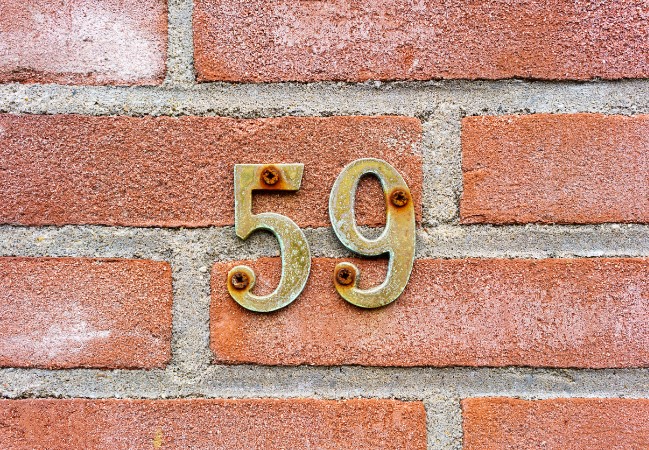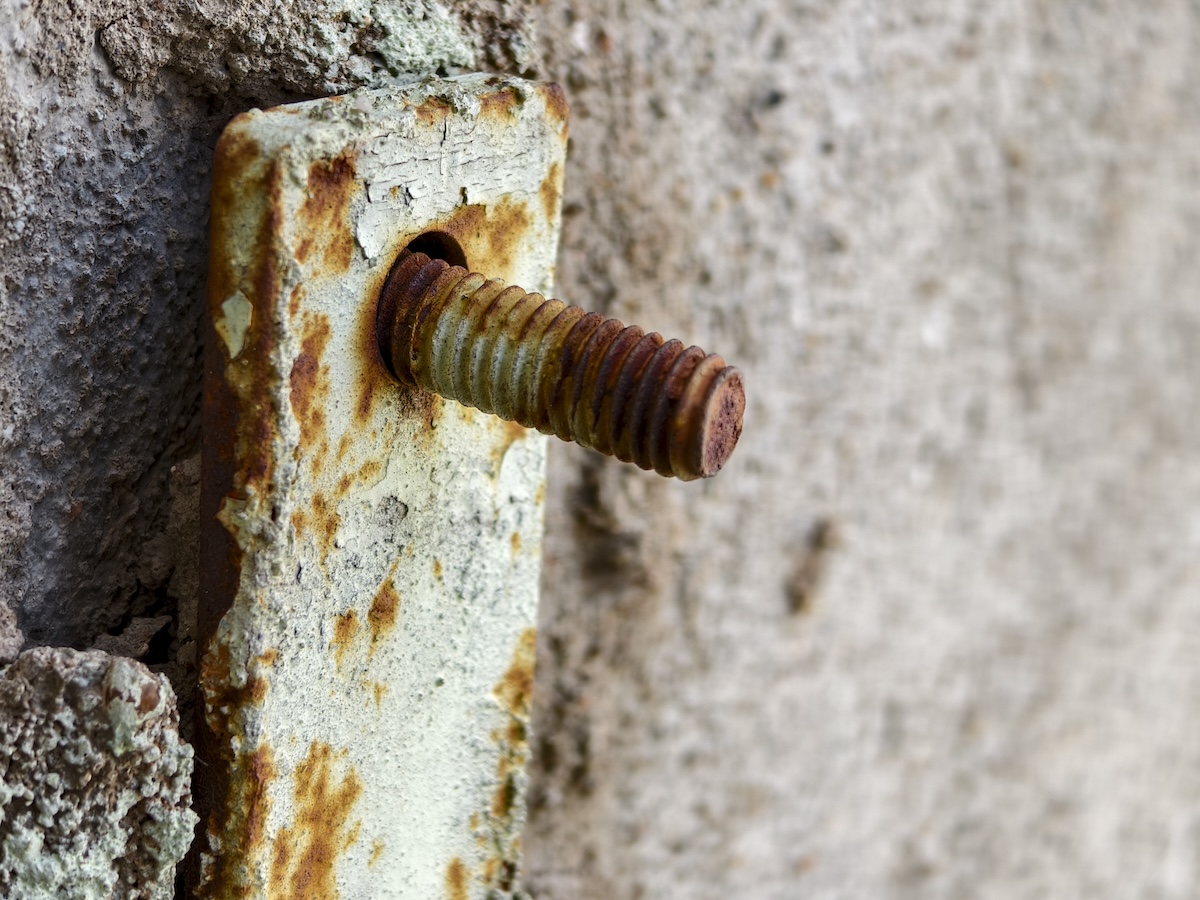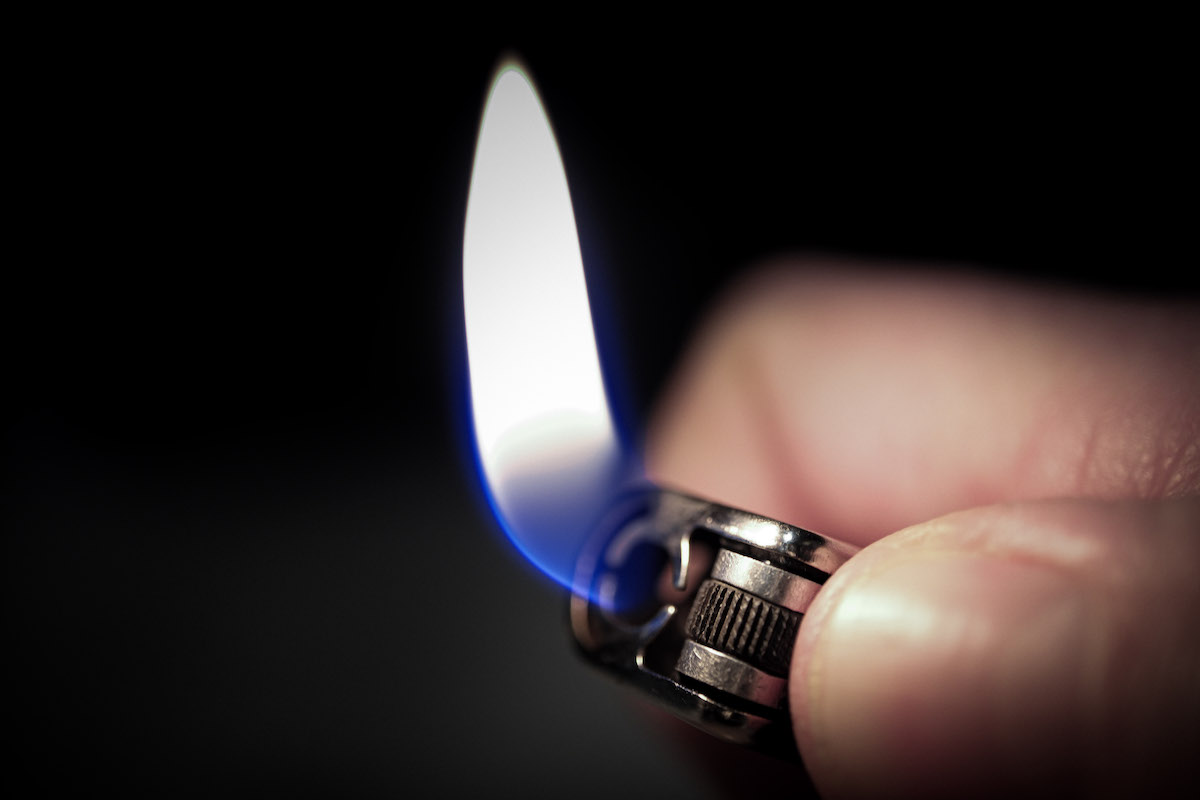

We may earn revenue from the products available on this page and participate in affiliate programs. Learn More ›
If you regularly repair old machinery or other things around your home, you’re bound to run into rusted screws. As long as you keep the right tools and supplies on hand, you can undo even the most stubborn fasteners. The key is to think of rust as just another form of glue: You first have to break the bond formed by the rust before adding lubricant to ease out the metal screws. Bearing this in mind, professionals often turn to these three incremental techniques for how to remove rusted screws.
Jay Sanders, a licensed contractor and owner of Castle Walls Basement Waterproofing in Baltimore, says a common mistake people make when trying to remove rusted screws is “using the wrong size screwdriver, applying too much force, or to keep turning a stripped screw.” With this in mind, let’s look at the best methods to deal with rusty screws.
1. Shock, Break, and Lube

Always start with the most gentle means of “persuasion,” because it’s much more difficult to remove a broken screw. Sanders recommends extra caution for certain materials. “If the surface is made of wood,” he says, “you need to be careful not to strip the surrounding material.” But if gentle methods don’t work, you can move on to the more heavy-duty methods outlined below to remove the rusted screws.
SUPPLIES
Ball peen hammer
Aerosol rust penetrant
Acetone or nail polish remover (optional)
Transmission fluid (optional)
Sewing machine oil (optional)
Screwdriver with hex bolster
Powdered kitchen/bath cleanser
Closed-end wrench to fit screwdriver bolster
Heavy leather gloves
Hand impact driver
Step 1: Break the bond.
First, break the rust’s bond by applying several swift hammer blows directly to the head of the screw. The hammer blows crack the rust, creating channels for the rust penetrant to seep in, dissolve and lubricate.
Step 2: Use rust penetrant.
Get a rust penetrant like Liquid Wrench, PB Blaster, and WD-40 Specialist Rust Release at your local hardware store. Alternatively, you can make your own from a 50/50 solution of acetone or nail polish remover and transmission fluid or sewing machine oil. If you don’t have those supplies, you can use a general purpose lubricant like WD-40; it just won’t work as well or as fast as a rust penetrant fluid.
After striking the screw head several times, apply a liberal amount of rust penetrant around the screw head. Let it soak for a few minutes. Then apply several more hammer blows. Wait 15 minutes to allow the rust penetrant to work.
Step 3: Drive the penetrant deeper by smacking the screw.
When you return to the task at hand, smack the screw head several more times and then tap the metal surface around the screw head to drive the penetrant deeper into the screw threads. Then try removing the screw.
If your screwdriver slips out of or starts stripping the screw head, stop! Adding more force will just strip the screw head, making it even more difficult to remove and impossible to reuse. This is the point where pros add a dab of automotive valve grinding compound to the screw head to act as a “gripping paste” to get more grip between the screwdriver tip and the screw head. You can make your own gripping paste, though, using an ordinary powdered kitchen or bathroom cleanser. Just stir a few drops of water into half a teaspoon of cleanser, press the paste into the screw head, then jam your screwdriver into the screw head and twist and push at the same time.
Step 4: Using a box-end wrench with your screwdriver (optional).
If your screwdriver is equipped with a hex-shaped bolster near the handle, you can get more leverage and twisting force by sliding a box-end wrench over the bolster. Lean into the screwdriver to keep the tip engaged with the screw and turn the screwdriver with the wrench.
If that increased torque doesn’t help, switch to a hand impact driver and a ball peen hammer. A hand impact driver converts straight hammer blows into a twisting motion force while forcing the bit deeper into the screw head at the same time. That means it reduces the chances of stripping the screw head while increasing your chances of a successful removal. Before you start, don eye protection and wear heavy gloves to protect your hands in case you miss the head of the tool. Set the tool to rotate counter-clockwise and choose an impact bit that fits snuggly into the screw head. Locate the bit in the screw, hold the tool with one hand and strike the impact tool with your hammer. Repeat until the screw loosens.
If the rusted screws still won’t budge, move on to the more aggressive methods below.
2. Cut a New Groove into Stripped Screws
Phillips and star head screws can’t handle a lot of torque without stripping. If your rusted screws remain stuck or you’ve stripped the screw heads, try cutting a notch into each head and removing them with a flat head screwdriver.
SUPPLIES
Rotary tool with cut-off wheel
Heavy leather gloves
Large flat head screwdriver
Step 1: Cut a slot into the screw head.
Still wearing your heavy leather gloves, cut a new straight slot deep into the screw head using a rotary tool and a cutting wheel. Make sure the slot is wide enough to accept the largest flat blade screwdriver you own while still providing a tight fit.
Step 2: Use a screwdriver.
Jam the flat tip into the newly made screw slot, and push and turn at the same time.
No dice? Time to turn up the heat.
3. Bring the Heat

Heating the screw head causes it to expand and that expansion helps crack the rust. But, heat can also ignite the flammable rust penetrant you’ve applied, melt internal plastic parts, and remove the steel’s temper, so it should always be used as a last resort. If you’ve tried the other steps and still can’t budge the screw, follow these fire preparation and heat application tips.
SUPPLIES
Water-based, grease-cutting household cleaner
Rags
Fire extinguisher
Heavy leather gloves
Butane lighter
Phillips or flat head screwdriver
Aerosol rust penetrant (optional)
Step 1: Remove rust penetrant.
Remove all traces of the rust penetrant oil and solvent using a water-based grease cutting household cleaner. Wipe the area and properly dispose of the oily rags.
Step 2: Get fire safety equipment ready.
Grab a fire extinguisher and keep it nearby, and wear leather gloves to prevent burns.
Step 3: Heat up the screw head.
Apply heat to the screw head using the tip of the flame from a butane lighter. Heat the screw head until you see steam or smoke (never cherry red), then stop!
Step 4: Cool the screw down quickly.
Immediately cool the screw head with a stream of water or a wet rag. It’s the expansion from heat, followed by contraction by cooling that breaks the rust bond.
Step 5: Repeat the hot/cold process, then take the screw out.
After several heat/quench cycles, try removing the cooled screw head with the original Phillips or star screwdriver (or a flat blade screwdriver if you’ve used Method 2 above).
If the screw starts to turn and then binds, apply rust penetrant to the screw head and turn the screw in and out several times to spread the penetrant down the threads. Repeat if necessary. Free of most of its rust, and then when it is well lubricated, the screw should come out easily.
FAQs
For best results, it’s usually best to let rusty screws soak in vinegar for 24 hours.
It’s not as effective as rust penetrant, but WD-40 will work in a pinch for removing rusted screws. Better yet, mix 50% WD-40 with 50% acetone and it should help loosen a rusted screw.
Your best bet to pull out a broken screw from metal is to use a screw extractor. This tool specializes in snapped screw removal, able to grip what’s left of the screw threads and pull the screw out.
To remove a screw with a broken head or if the head is completely worn, use a screw extractor. This tool works great for both snapped screws and worn screw heads.
